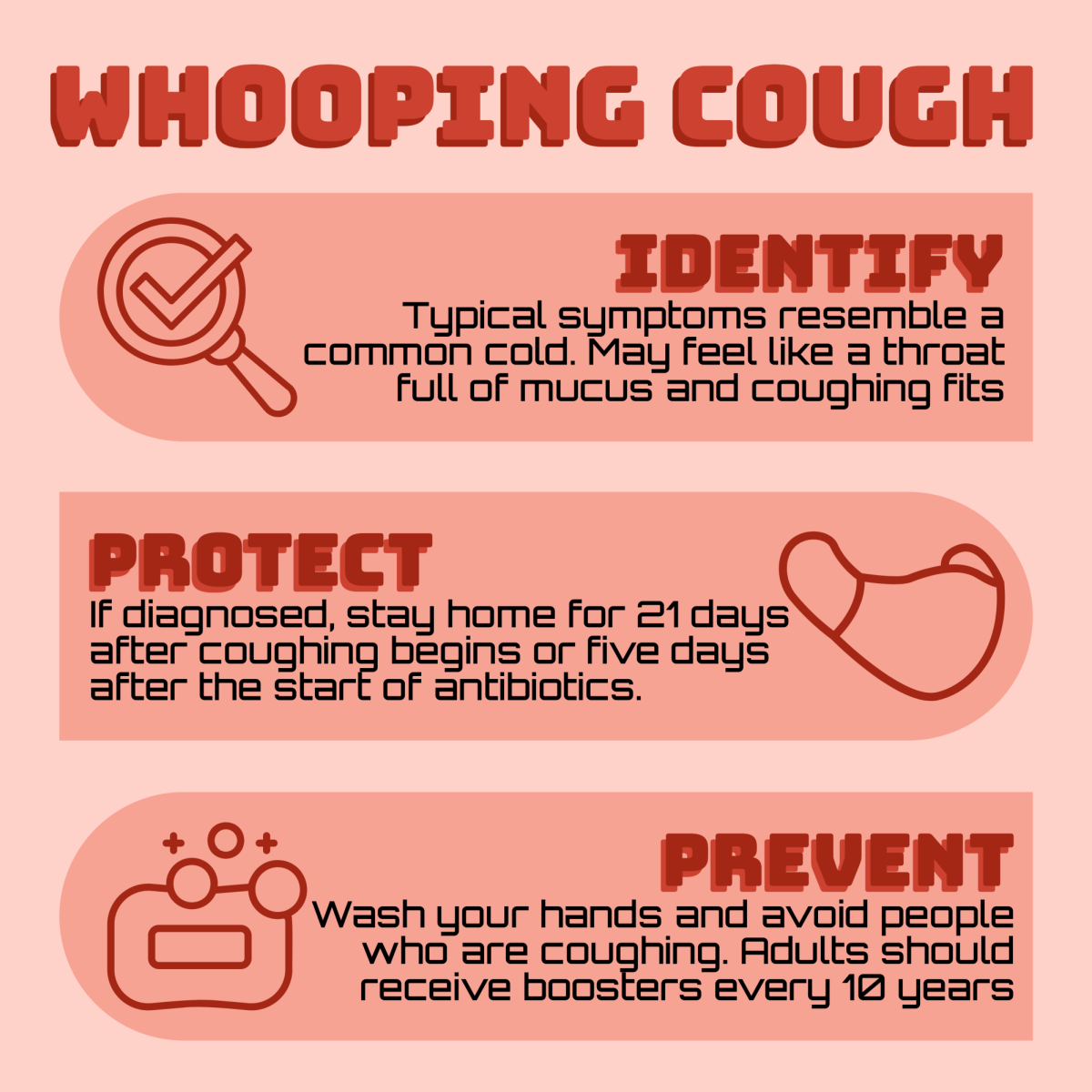On April 10th, a letter from the school was sent out informing students, staff, and families that whooping cough was going around at Miramonte. According to Miramonte school nurse Karen Thornburg, at least one case of whooping cough, scientifically known as pertussis, had been confirmed. Eight days later, the Contra Costa County Health Department (CCHD) issued a health advisory indicating that “fifteen lab-confirmed cases of pertussis have been reported [in the county] in April.”
But what exactly is whooping cough, and why is it on the rise at Miramonte?
Whooping cough — caused by an infection by the bacterium Bordetella pertussis — manifests as prolonged bouts of coughing, often accompanied by a distinctive “whooping” sound when a person inhales. At first, typical symptoms resemble a common cold. However, according to the California Public Health Department, whooping cough can prolong itself for more than 10 weeks. Once pertussis begins circulating in a community, reports Forbes, the disease “is highly communicable … [and] up to 90% of contacts can become infected.” The CCHD reported the ages of the infected range from 6 months to 50 years, with a median age of 16 years “as many cases are of high school age.”
What does it feel like?
Whooping cough, according to one person with it, feels a lot like asthma but with a throat full of mucus and a coughing fit. You get a chain reaction where each cough triggers another cough [and] you feel like you can’t breathe. When your breathing clears, “your face is red, and your eyes are watering, and you feel weak, then it starts all over again.” To hear what it sounds like: Whooping Cough Sound
What can I do to NOT get it?
Nurse Thornberg recommends washing your hands and avoiding people who are coughing. The CDC recommends adults receive boosters every ten years, “but more often if they are interacting with infants and young children.”
What’s causing it to spread at Miramonte? For one, pertussis is inherently prevalent among high-school aged patients.
Additionally, per Nurse Thornberg, pertussis peaks in cycles, “with surges occurring every three to five years..” This cyclical pattern stems from the constant introduction of new versions of the pertussis vaccine. The New Yorker reports that initially, from the 1950s through the 1990s, “the whooping-cough vaccine was considered an unambiguous success story [but o]ver time scientists—as well as crusading vaccine skeptics—raised concerns about the shots’ side effects, which could include high fever and, occasionally, seizures.” So in the late nineties, the U.S. switched to a new formulation, however, the effectiveness of the new vaccine waned far faster than the old version.
Miramonte students and high schoolers throughout California were vaccinated for whooping cough before entering 7th grade, in accordance with California law. In 2011, California enacted AB 354, which required all students entering 7th grade to show proof of a booster vaccine called “Tdap,” which protects against three dangerous diseases: tetanus, diphtheria, and whooping cough. However, the mandated vaccine is waning in effectiveness because of the new formula.
What if I DO get it?
If you are coughing, stay home! According to the CDC, people diagnosed with whooping cough should stay home for 21 days after coughing begins or for five days after the start of antibiotics.
As the whooping cough vaccine is wearing off for many students at Miramonte the virus is on the rise at the school, look out for symptoms like a common cold and a prolonged cough with whooping sound as you inhale. If you get diagnosed with whooping cough it is advised you stay home for 21 days.









